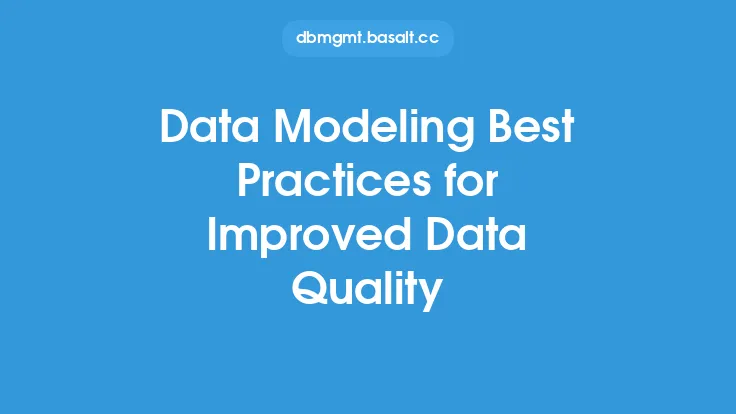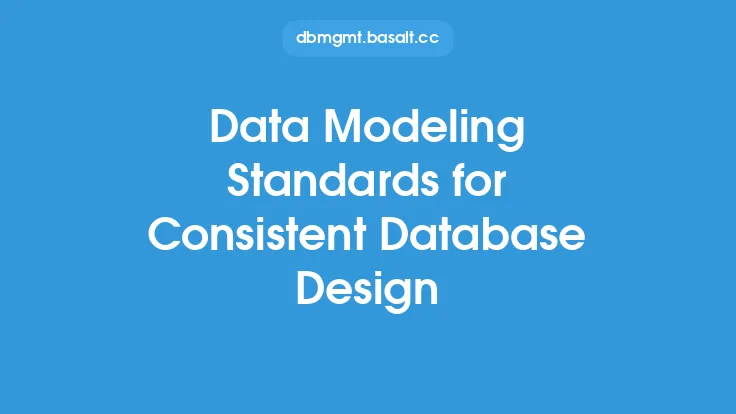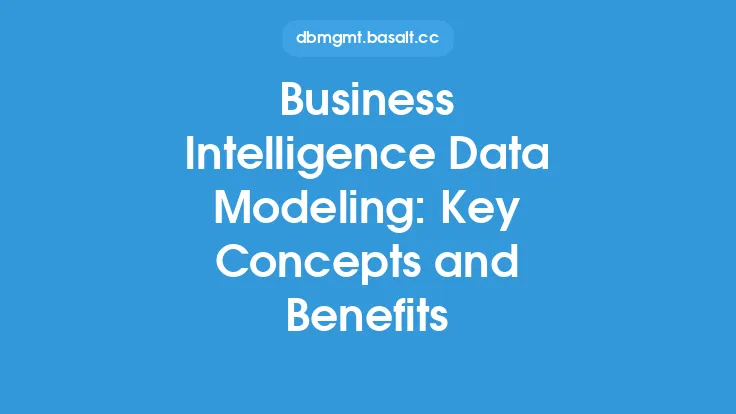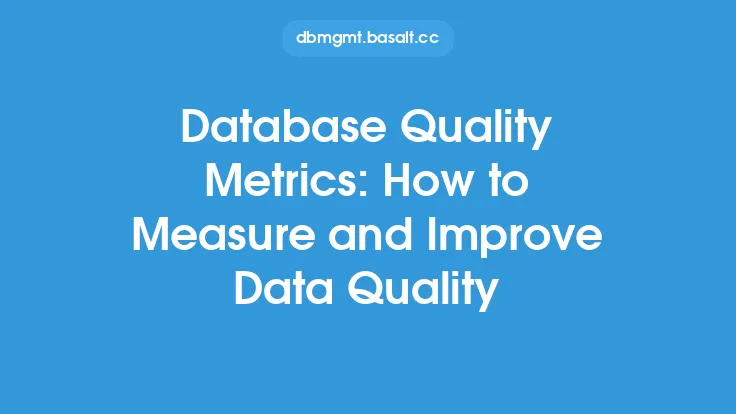Conceptual data modeling is a crucial step in the data modeling process that plays a significant role in enhancing data quality and consistency. By creating a conceptual model, organizations can establish a clear understanding of their data assets, identify relationships between different data entities, and define the rules and constraints that govern their data. This, in turn, helps to ensure that data is accurate, complete, and consistent across the organization.
Introduction to Conceptual Data Modeling
Conceptual data modeling involves creating a high-level representation of an organization's data assets, including entities, attributes, and relationships. This model is typically developed during the early stages of a data modeling project and serves as a foundation for subsequent modeling activities. The conceptual model provides a simplified view of the data, focusing on the key concepts and relationships that are relevant to the organization. By creating a conceptual model, organizations can establish a common understanding of their data assets and ensure that all stakeholders are on the same page.
Benefits of Conceptual Data Modeling for Data Quality
Conceptual data modeling offers several benefits that can enhance data quality. Firstly, it helps to identify and eliminate data redundancy and inconsistencies. By creating a single, unified view of the data, organizations can avoid duplication of effort and ensure that data is consistent across different systems and applications. Secondly, conceptual data modeling enables organizations to define data standards and rules, which helps to ensure that data is accurate and complete. Finally, the conceptual model provides a framework for data validation and quality checks, which helps to detect and correct errors before they become major issues.
Enhancing Data Consistency through Conceptual Data Modeling
Conceptual data modeling also plays a critical role in enhancing data consistency. By defining a common set of data entities, attributes, and relationships, organizations can ensure that data is consistent across different systems and applications. This, in turn, helps to improve data integration and reduce errors that can occur when data is moved from one system to another. Additionally, the conceptual model provides a framework for data transformation and mapping, which helps to ensure that data is converted correctly when it is moved from one system to another.
Technical Aspects of Conceptual Data Modeling
From a technical perspective, conceptual data modeling involves creating a set of entity-relationship diagrams (ERDs) that represent the data entities, attributes, and relationships. These diagrams are typically created using data modeling tools, such as Entity-Relationship Diagram (ERD) tools or Object-Relational Mapping (ORM) tools. The ERDs provide a visual representation of the data, making it easier to understand and communicate the data model to stakeholders. Additionally, the conceptual model can be used to generate a set of data definition language (DDL) statements, which can be used to create the physical database schema.
Best Practices for Conceptual Data Modeling
To get the most out of conceptual data modeling, organizations should follow best practices. Firstly, the conceptual model should be developed in collaboration with stakeholders from across the organization, including business users, data analysts, and IT professionals. This helps to ensure that the model is comprehensive and accurate. Secondly, the conceptual model should be regularly reviewed and updated to reflect changes in the organization's data assets and business requirements. Finally, the conceptual model should be used as a foundation for subsequent modeling activities, including logical and physical data modeling.
Common Challenges and Pitfalls
Despite the benefits of conceptual data modeling, there are several common challenges and pitfalls that organizations should be aware of. Firstly, creating a conceptual model can be a time-consuming and resource-intensive process, requiring significant input from stakeholders and data modeling experts. Secondly, the conceptual model may not always reflect the physical reality of the data, which can lead to inconsistencies and errors. Finally, the conceptual model may become outdated if it is not regularly reviewed and updated, which can lead to a mismatch between the model and the actual data.
Real-World Applications of Conceptual Data Modeling
Conceptual data modeling has a wide range of real-world applications, from data warehousing and business intelligence to data governance and data quality. For example, a retail organization might use conceptual data modeling to create a unified view of customer data, including demographic information, purchase history, and loyalty program data. This helps to ensure that customer data is accurate, complete, and consistent across different systems and applications, which is critical for targeted marketing and customer relationship management. Similarly, a healthcare organization might use conceptual data modeling to create a unified view of patient data, including medical history, treatment plans, and billing information.
Conclusion
In conclusion, conceptual data modeling is a critical step in the data modeling process that plays a significant role in enhancing data quality and consistency. By creating a conceptual model, organizations can establish a clear understanding of their data assets, identify relationships between different data entities, and define the rules and constraints that govern their data. This, in turn, helps to ensure that data is accurate, complete, and consistent across the organization. By following best practices and avoiding common challenges and pitfalls, organizations can get the most out of conceptual data modeling and improve the overall quality and consistency of their data.





